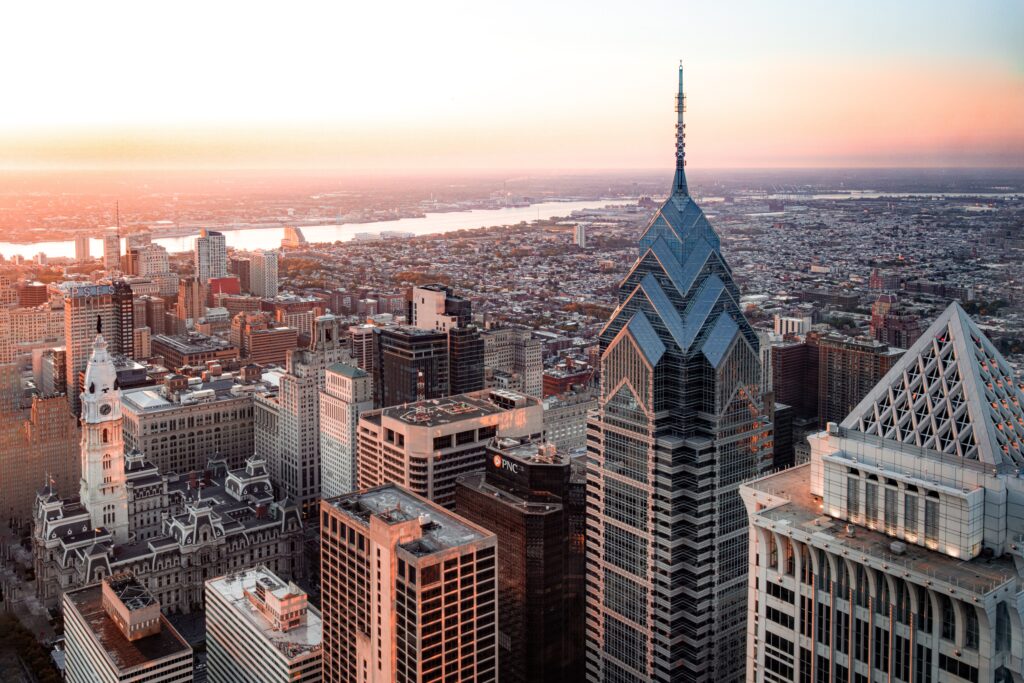
The Need for LEED
By Michael DuTot
Over the last decade, Philadelphia has experienced worsening air quality, fiercer floods, and more frequent heat waves. In 2017, Philadelphia faced 16 days of “unhealthy air quality,” dealt with four-foot floods, and declared “excessive heat warnings” at temperatures with a real feel of 110 degrees Fahrenheit. While our collective attention has been focused on tackling COVID-19, it has become abundantly clear that pollution and carbon emissions are damaging the neighborhoods we call home. Moreover, the effects of climate change are hitting low-income neighborhoods the hardest, compounding Philadelphia’s inequality problem. We must recognize that the climate crisis is affecting Philadelphia today, and we must come together to protect our city and neighbors.
As one of the nation’s oldest cities, it is no surprise that Philadelphia has outdated infrastructure. From structural problems on I-95 to a combined sewer and stormwater system, Philadelphia is in desperate need of engineering updates. A lack of green infrastructure and relatively few LEED-certified buildings only exacerbate the effects of climate change. LEED, or Leadership in Energy and Environmental Design, certified buildings aim to maximize operational efficiencies and integrate green technology into their design. From the Empire State Building in New York to Taipei 101 in Taiwan, LEED-certifications are recognized internationally for reducing carbon emissions and mitigating our carbon footprint. In fact, each LEED building uses 32% less electricity than a conventional building and saves 350 metric tons of carbon emissions annually. In the long-term, decreased carbon emissions will combat the increasing number of floods in North Philly and fight the consequences of a warming planet. Additionally, the green and white roofs common on LEED buildings reflect the sun’s rays, lower air-conditioning costs, and mitigate the dangers of rising average temperatures.
While weather conditions have worsened, so has the mental health crisis. Roughly 18% of residents reported having some type of mental health disorder. A nationwide study by Denmark’s University of Aarhus found that citizens who grew up with the least green space nearby had a 55% increased risk of developing psychiatric disorders. While LEED buildings alone will not solve the crisis, integrating green spaces into urban environments is a proven strategy for improving mental and physical health in the short-term. Green spaces offer a much-needed refuge from higher levels of stress and pollution common in urban settings. Although the advantages of green buildings are clear and pervasive, Philadelphia has been slow to adopt green projects. With only 909 LEED projects, “The City of Brotherly Love” ranks 8th in the nation, trailing Washington D.C. by roughly 1,700 projects.
With increasing child hospitalization rates from asthma, climbing death tolls from heat waves, and growing rates of mental illness, Philadelphia needs to make some changes. One key contributor to these worsening conditions that officials must act on is today’s lack of green spaces. As Philadelphia updates its infrastructure, government officials have a duty to support green infrastructure projects. Despite funding fewer projects than Washington, Philadelphia has proven its capability to update existing buildings to reach LEED requirements. In 2015, Philadelphia updated Barry Playground to meet LEED-gold standards with a geothermal HVAC system, improved insulation, and full site stormwater infrastructure. While newly constructed LEED buildings may underestimate the carbon costs associated with construction, updating existing properties to meet LEED standards is a worthwhile strategy to cut carbon emissions.
Our first step as a city must be to vote for candidates who understand the issues plaguing Philadelphia and have concrete solutions for fighting climate change. Still, Philadelphia does not need to wait for the next election cycle to make a difference; we must align our beliefs with our actions starting today. First, to lessen the impact of worsening air quality, residents can update their home’s HVAC system, create a tobacco-free home, and follow the recommendations outlined in Philadelphia’s Office of Sustainability 2016 Greenworks plan. Outside of the home, we can reduce car emissions by carpooling or using public transportation. Next, if you live in an area prone to flooding, you can find out if you qualify for Philadelphia Water Department’s Basement Protection Program. In addition, you can visit fema.gov to consider the cost of insuring your property against flood damages. Finally, we can put our money where our mouth is. Over the last 5 years, Environmental, Social, and Governance investing has grown rapidly and proven itself as a viable strategy to deliver strong financial returns and support companies that align with your personal values. Speaking with your employer about ESG-adherent 401k options will be beneficial not only for your pockets but for the greater good of Philadelphia too.
It is time to support government officials who will recognize the dangers of climate change and champion green infrastructure projects in all neighborhoods.
Micheal DuTot is a Core Pathways student and an OPIM & Finance major in the MSB’21.